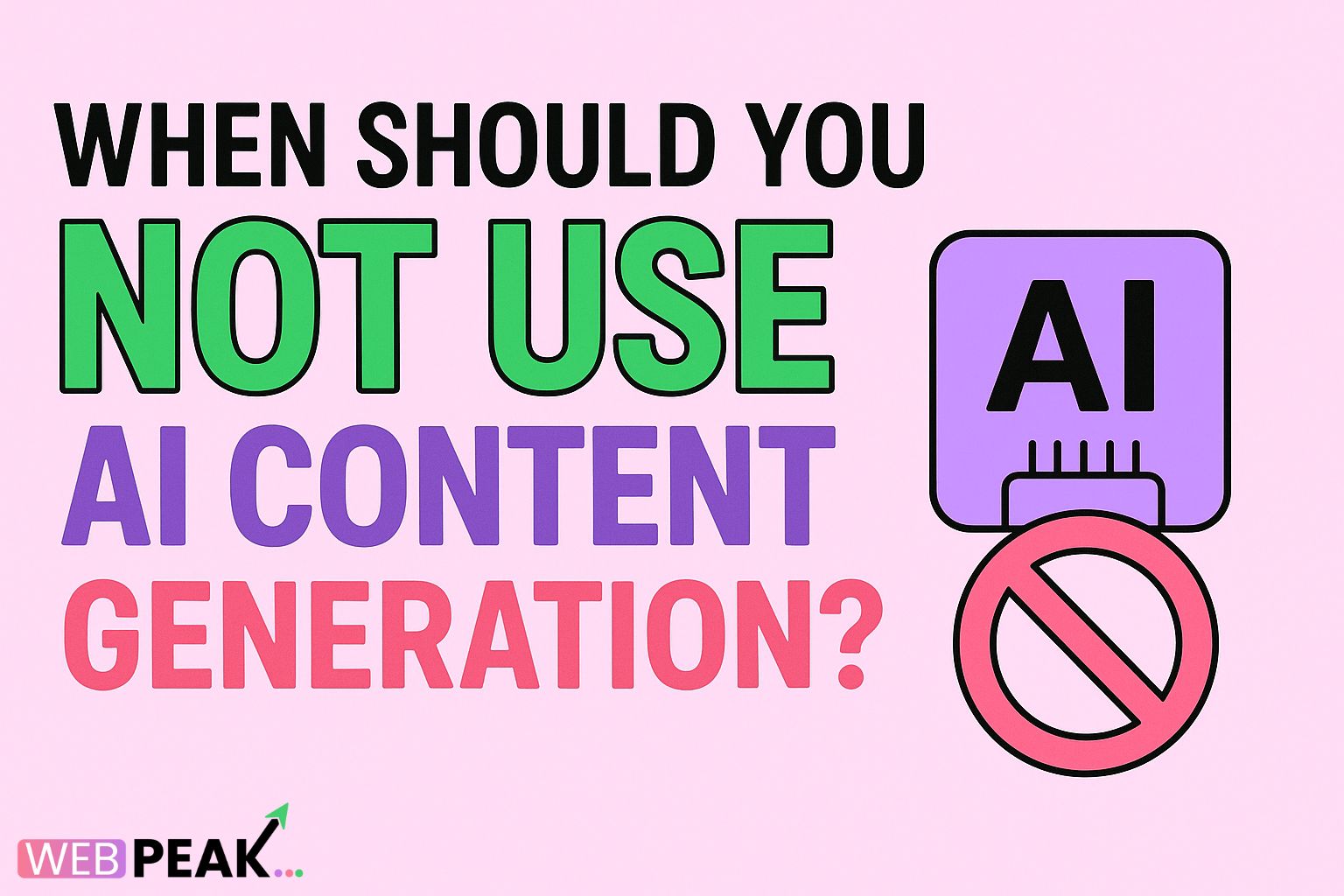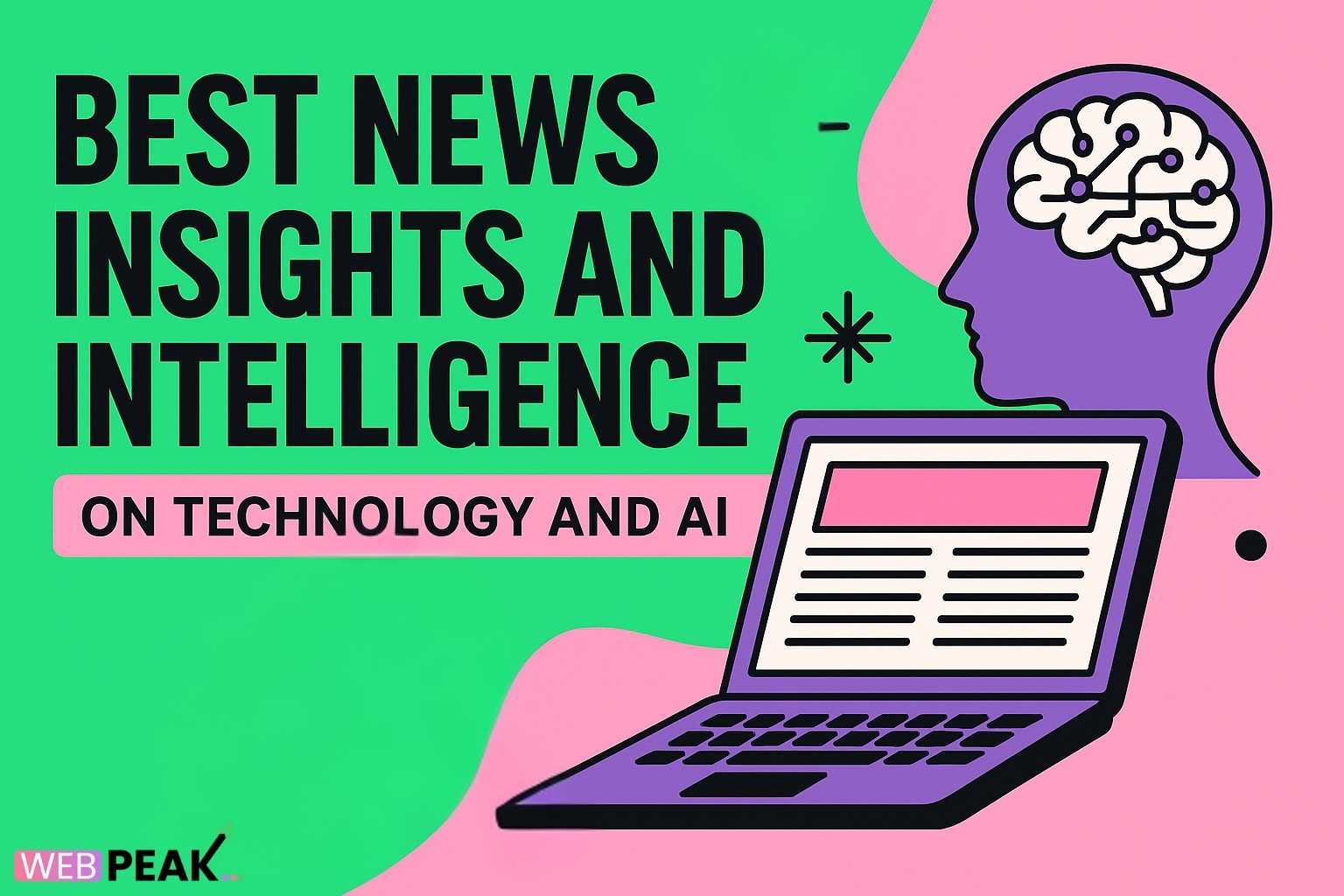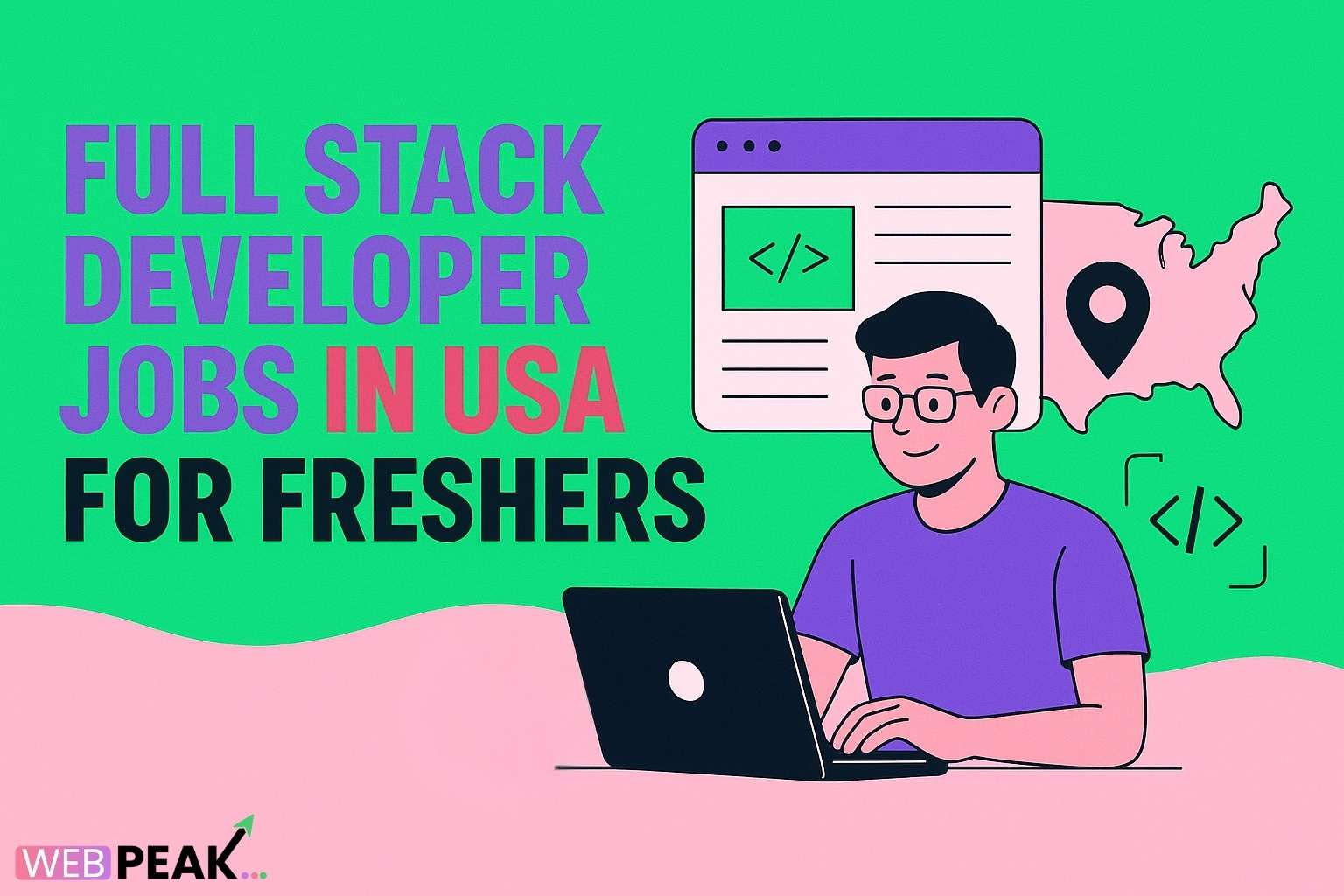When Should You Not Use AI Content Generation?
Artificial Intelligence has transformed the way we create and consume digital content. AI-powered tools can now write articles, product descriptions, emails, and even scripts in seconds. However, despite its growing dominance in the digital landscape, there are moments when relying on AI content generation can do more harm than good. Understanding when you should not use AI content generation is crucial for maintaining authenticity, creativity, and credibility in your brand’s messaging.
This article explores the boundaries of AI-generated content, the risks of over-dependence, and the scenarios where human expertise remains irreplaceable. Whether you’re a business owner, content strategist, or developer integrating AI into your workflow, this guide provides the clarity you need to make smarter, more ethical, and effective content decisions.
Understanding AI Content Generation
AI content generation involves using machine learning models and natural language processing (NLP) systems to produce written content automatically. These systems analyze data patterns, user inputs, and contextual prompts to deliver text that mimics human writing. Tools like ChatGPT, Jasper, and Writesonic have revolutionized marketing workflows by enabling fast and scalable content creation.
While this technology can streamline productivity and lower costs, it also introduces challenges related to originality, accuracy, tone, and compliance. Recognizing when to rely on AI—and when not to—is a skill every marketer and creator must develop.
When Should You Not Use AI Content Generation?
There are specific scenarios where using AI-generated content can compromise quality, brand trust, or even legal compliance. Below are the key contexts where AI should not replace human creativity or oversight.
1. When Creating Emotionally Sensitive or Personal Content
AI lacks true emotional intelligence. It can simulate empathy, but it doesn’t feel emotions. When producing content on sensitive topics—such as mental health, grief, social issues, or personal experiences—AI often falls short of the depth and authenticity required.
- Example: Writing a condolence message, trauma recovery guide, or personal memoir should never be outsourced to AI tools.
- Why: AI-generated text may unintentionally appear tone-deaf or impersonal, risking emotional disconnection or offense.
2. When Accuracy and Factual Integrity Are Critical
AI models generate content based on learned data patterns rather than verified facts. Therefore, they can “hallucinate”—producing information that sounds credible but is incorrect or outdated. For industries like finance, law, healthcare, or scientific research, even minor inaccuracies can lead to serious repercussions.
- Always fact-check AI-generated data, especially statistics or legal references.
- Use human editors or domain experts to review AI content for compliance and factual accuracy.
Tip: In sectors with strict regulatory oversight (like medical or legal), avoid using AI-generated content altogether unless reviewed by licensed professionals.
3. When Your Brand Voice Must Stay Consistent
Every business has a distinct tone, language style, and emotional appeal. AI often struggles to maintain these nuances across long-form content or multi-channel campaigns. It might sound robotic, inconsistent, or too generic—undermining brand recognition and trust.
For high-impact materials like branding copy, mission statements, or investor communications, human-crafted writing ensures emotional resonance and brand alignment.
4. For Unique Creative Storytelling or Artistic Expression
AI excels at mimicking patterns but lacks true imagination. When it comes to fiction writing, poetry, or advertising slogans, human creativity remains unmatched. While AI can help brainstorm or outline ideas, the actual creation process requires human insight, emotional depth, and originality.
- Do not use AI for: Novel writing, film scripts, creative campaigns, or personal art projects.
- Do use AI for: Research, outlines, or keyword generation.
5. When SEO and Content Ranking Are at Stake
Google’s algorithms prioritize helpful, original, and human-centered content. While AI-generated text can be SEO-optimized, overusing it may trigger search engine scrutiny if the content appears generic or low-quality. Google’s Helpful Content Update emphasizes value-driven content created for people—not machines.
SEO Risks of Poor AI Content:
- Duplicate or repetitive phrasing leading to content penalties.
- Thin content lacking depth or user intent alignment.
- Keyword stuffing without genuine context.
Always ensure human editors refine and optimize AI drafts for readability, accuracy, and engagement before publishing.
6. When Intellectual Property or Plagiarism Risks Exist
AI systems are trained on massive datasets, including web content, books, and open-source text. As a result, some AI outputs may inadvertently resemble copyrighted material. This poses risks for publishers, content marketers, and e-commerce brands who could face copyright infringement claims.
- Run plagiarism checks on all AI-generated content before publication.
- Never use AI-generated product descriptions or marketing copy without human editing and verification.
7. When Audience Trust and Authority Matter Most
In thought leadership, journalism, and expert advisory content, authenticity is non-negotiable. Readers expect expertise, credibility, and human perspective. Overreliance on AI can erode this trust if the audience perceives your insights as machine-generated rather than experience-driven.
In such cases, AI should remain a supportive tool—never the author.
Best Practices for Combining AI and Human Creativity
While knowing when not to use AI is crucial, the goal is not to eliminate AI from your workflow. Instead, businesses should strategically combine human creativity with AI efficiency. Here’s how to balance both effectively:
1. Use AI for Research, Not Final Drafts
Let AI assist with brainstorming, keyword research, or data gathering—but ensure humans craft the narrative and emotional flow.
2. Implement Human Editing Pipelines
Every piece of AI-generated content should pass through a skilled editor or subject expert before publication.
3. Maintain Clear Ethical Guidelines
Define when and how AI tools can be used in your organization. Transparency fosters trust both internally and externally.
4. Use AI Responsibly in Automation
AI automation can help with content scheduling, A/B testing, and analytics—but not decision-making related to brand reputation or messaging.
5. Keep Creativity Human-Centric
Encourage your writers, marketers, and designers to use AI as an assistant, not a replacement. Human insight will always be your brand’s competitive edge.
Common Mistakes Businesses Make with AI Content Generation
- Publishing AI drafts without review: leads to inaccuracies and potential SEO penalties.
- Ignoring brand tone consistency: results in fragmented messaging.
- Over-automation: reduces authenticity and customer trust.
- Failing to monitor AI bias: creates reputational and ethical issues.
Ethical Considerations in AI-Driven Content
Ethical responsibility is paramount when leveraging AI. Transparency about AI involvement enhances credibility. Disclosing when content is AI-assisted helps maintain honesty with readers and regulators alike. Always ensure compliance with data privacy laws and avoid using AI tools trained on non-consensual or biased datasets.
How to Identify AI Content That Needs Human Review
Here’s a quick checklist to determine when AI-generated content should be reviewed or rewritten by a human expert:
- Contains emotional or opinion-driven arguments
- Includes technical data, statistics, or legal references
- Represents your brand’s public image or leadership voice
- Appears repetitive or lacks storytelling flow
- Feels generic or too “perfectly structured” without natural tone
Integrating AI Wisely in Your Workflow
AI should empower—not replace—your creative team. Tools like Grammarly, Jasper, or SurferSEO can enhance productivity when used correctly. But ultimate decision-making must always remain human. Businesses that maintain this balance are better equipped to produce meaningful, engaging, and compliant digital experiences.
Conclusion: AI Is a Tool, Not a Substitute for Human Judgment
AI content generation is a remarkable advancement, but it’s not a one-size-fits-all solution. Knowing when you should not use AI content generation helps protect your brand’s authenticity, accuracy, and trustworthiness. By blending the strengths of both AI and human creativity, businesses can achieve scalable, high-quality content without compromising integrity or innovation.
For expert assistance in implementing AI responsibly in your digital marketing strategy, you can partner with WEBPEAK, a full-service digital marketing company offering Web Development, Digital Marketing, and Artificial Intelligence solutions tailored for growth-focused brands.
FAQs
1. Can I use AI to write all my website content?
While AI can help with idea generation and drafting, it’s not advisable to rely solely on it. Human editing ensures accuracy, brand tone, and SEO compliance, which AI alone cannot guarantee.
2. How can I detect if AI-generated content is low-quality?
Look for signs like repetitive language, vague statements, or overly polished phrasing. Tools like GPTZero or Originality.ai can also detect AI-generated content patterns.
3. Is AI-generated content bad for SEO?
Not necessarily. AI content can rank well if it’s original, useful, and edited for human readability. However, mass-produced or low-value AI text can harm SEO rankings under Google’s Helpful Content policies.
4. What are the legal risks of using AI-generated content?
The main risks include copyright violations, plagiarism, and spreading misinformation. Always review AI output to ensure originality and compliance with intellectual property laws.
5. Should startups use AI for marketing content?
Startups can benefit from AI for scalability and idea generation, but they should avoid using it for core brand storytelling or investor materials where emotional authenticity is vital.
6. What’s the best way to combine AI and human content creation?
Use AI for research, outline creation, and repetitive writing tasks—then let humans refine, fact-check, and personalize the final version for maximum impact and credibility.





